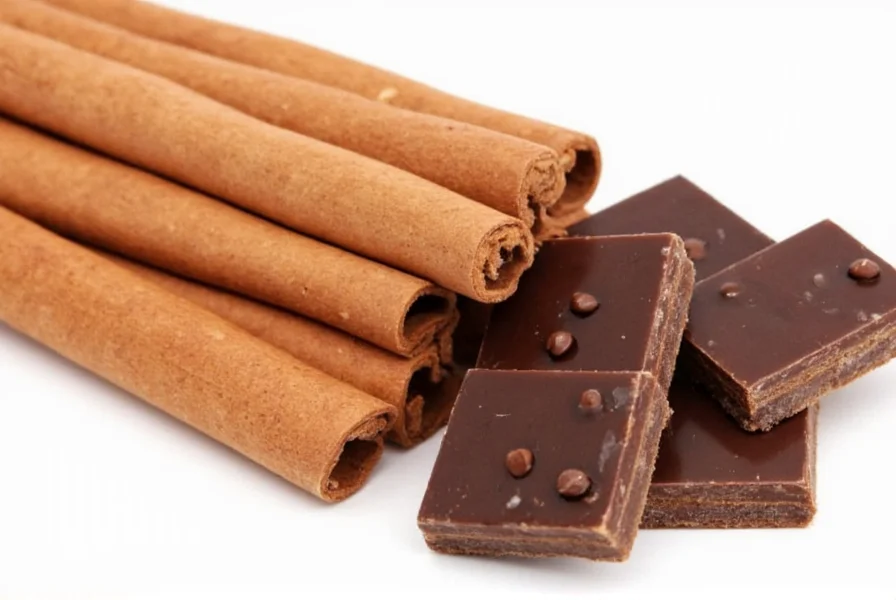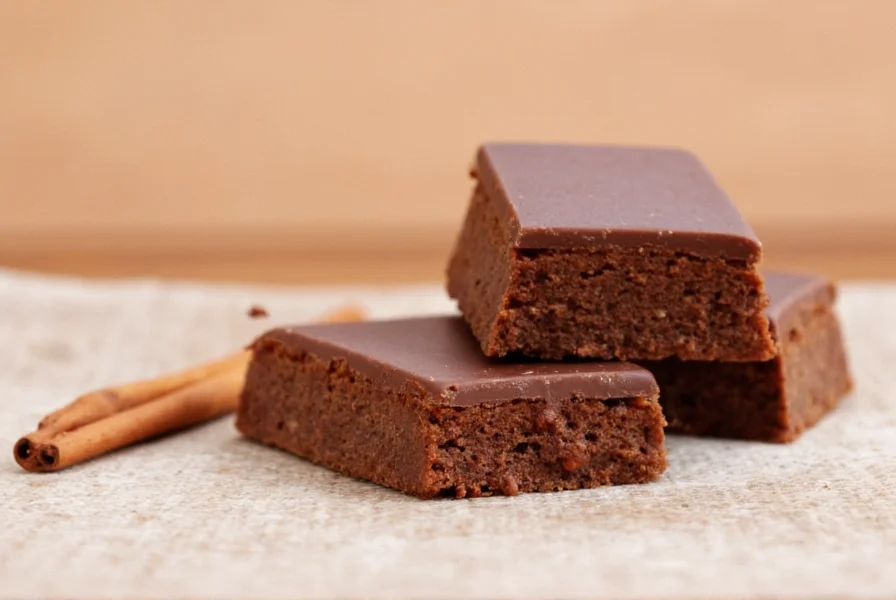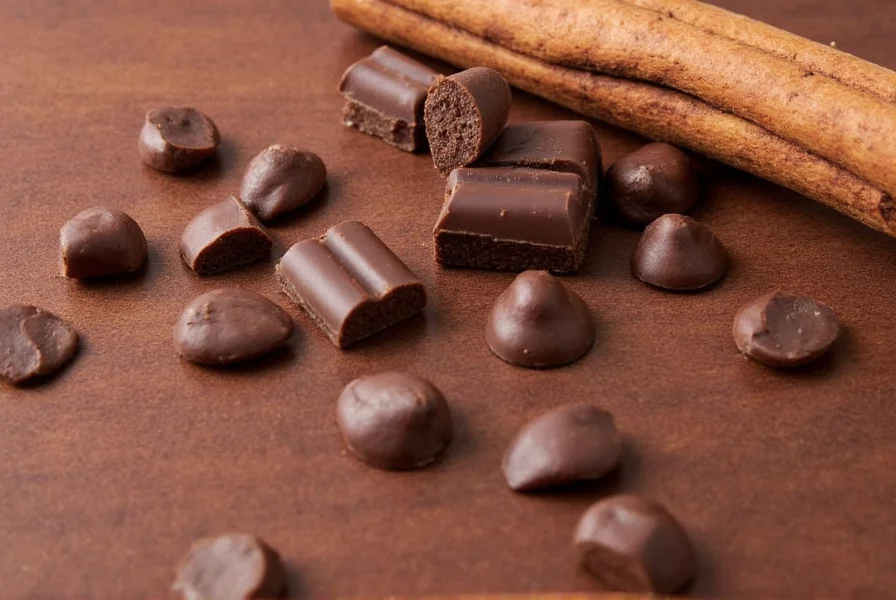For centuries, culinary experts have recognized the remarkable synergy between cinnamon and chocolate. This dynamic duo creates a flavor profile greater than the sum of its parts, offering warmth, complexity, and balance that neither ingredient achieves alone. The magic happens through both scientific principles and historical tradition, making it one of the most enduring flavor combinations in global cuisine.
The Science Behind the Perfect Pairing
Understanding why cinnamon and chocolate work so well together requires examining their chemical compositions. Both contain compounds that interact in ways that enhance our sensory experience. Cinnamon's primary flavor compound, cinnamaldehyde, provides that distinctive warm spice, while chocolate contains hundreds of compounds including theobromine and various polyphenols that create its complex profile.
When combined, these ingredients trigger multiple taste receptors simultaneously. The warmth of cinnamon activates thermoreceptors, while chocolate's bitterness and sweetness engage different taste pathways. This multi-sensory engagement creates what food scientists call flavor layering—where multiple taste experiences occur in sequence rather than simultaneously, resulting in a more complex and satisfying flavor journey.
| Flavor Component | Cinnamon Contribution | Chocolate Contribution | Combined Effect |
|---|---|---|---|
| Sweetness | Subtle natural sweetness | Primary sweet profile | Enhanced, balanced sweetness |
| Bitterness | Minimal | Significant (especially dark chocolate) | Tempered, more approachable bitterness |
| Warmth | Strong spicy warmth | Mild warmth from cocoa | Harmonized warming sensation |
| Complexity | Woody, citrus notes | Nutty, fruity, earthy notes | Multi-dimensional flavor profile |
Historical Roots of Cinnamon Chocolate Pairing
The marriage of cinnamon and chocolate traces back to ancient Mesoamerica, where cacao was first cultivated. The Aztecs and Mayans consumed chocolate not as a sweet treat but as a bitter beverage often spiced with native peppers and other available spices. When Spanish explorers brought cacao to Europe in the 16th century, they began experimenting with available Old World spices to make the bitter drink more palatable.
Cinnamon quickly emerged as the perfect complement. Unlike chili peppers which created a different kind of heat, cinnamon provided a warming spice that enhanced rather than competed with chocolate's complex flavor profile. By the 17th century, cinnamon-spiced chocolate beverages had become popular among European aristocracy, establishing a tradition that continues today in many cultural chocolate preparations.
Modern Culinary Applications
Contemporary chefs and home cooks continue to explore the versatility of this classic pairing. The ratio of cinnamon to chocolate determines the character of the final product:
- Subtle enhancement (1:10 ratio): A pinch of cinnamon in chocolate baked goods enhances depth without making the spice noticeable
- Balanced pairing (1:5 ratio): Equal prominence where both flavors are distinctly present but harmonious
- Cinnamon-forward (1:2 ratio): Where cinnamon takes center stage with chocolate providing background richness
Professional pastry chefs recommend adding cinnamon early in the cooking process for baked goods to allow its flavors to fully integrate, while for beverages, adding it toward the end preserves more of its volatile aromatic compounds.

Health Considerations of Cinnamon Chocolate Combinations
Both cinnamon and dark chocolate offer potential health benefits when consumed in moderation. Cinnamon contains cinnamaldehyde and other compounds with antioxidant properties, while dark chocolate (70% cocoa or higher) provides flavonoids associated with cardiovascular benefits.
Research suggests that combining these ingredients may create synergistic effects. A 2020 study published in the Journal of Food Science found that the antioxidant capacity of chocolate-cinnamon combinations exceeded the sum of their individual antioxidant capacities—a phenomenon known as antioxidant synergy.
However, these benefits apply primarily to dark chocolate with high cocoa content and real cinnamon (Ceylon variety is preferred for regular consumption due to lower coumarin levels than Cassia cinnamon). Milk chocolate and artificial flavorings diminish these potential benefits.
Perfecting Your Cinnamon Chocolate Creations
When working with this flavor pairing, consider these professional tips:
- Quality matters: Use real cinnamon (preferably Ceylon) rather than artificial cinnamon flavoring for authentic results
- Temperature control: Add cinnamon to chocolate mixtures when they're slightly cooled to preserve volatile aromatic compounds
- Balance with acidity: A touch of citrus or tart element can brighten the combination and prevent it from becoming cloying
- Consider texture: Pairing the smoothness of chocolate with the slight grit of ground cinnamon creates interesting mouthfeel contrast
- Resting time: Allowing cinnamon-chocolate mixtures to rest for 24 hours often improves flavor integration
One common mistake home cooks make is using too much cinnamon, which overwhelms the chocolate rather than complementing it. Start with small amounts (1/8 teaspoon per ounce of chocolate) and adjust to taste. Remember that cinnamon's flavor intensifies slightly as it sits, so what seems perfect immediately may become overpowering after resting.

Global Variations of Cinnamon Chocolate Pairings
Cultures around the world have developed unique interpretations of this flavor combination:
- Mexico: Traditional Mexican hot chocolate incorporates cinnamon directly into the chocolate tablets
- Spain: Chocolate a la piedra often includes cinnamon as one of several spices
- United States: Cinnamon chocolate chip cookies and cinnamon hot chocolate are popular variations
- India: Some regional chai recipes incorporate both chocolate and cinnamon
- Middle East: Certain date and chocolate confections feature cinnamon as a key spice
These global interpretations demonstrate the universal appeal of this flavor pairing while showcasing how cultural preferences influence the specific ratios and preparation methods.
Conclusion: The Enduring Appeal of Cinnamon and Chocolate
The enduring popularity of cinnamon and chocolate together isn't merely tradition—it's rooted in science, history, and sensory experience. When properly balanced, this pairing creates a flavor experience that engages multiple senses simultaneously while providing both comfort and sophistication. Whether in a simple hot chocolate or an elaborate dessert, the combination continues to captivate palates worldwide, proving that some flavor marriages are truly timeless.
Does cinnamon enhance the flavor of chocolate?
Yes, cinnamon enhances chocolate's flavor profile by adding warm, spicy notes that complement chocolate's natural bitterness and sweetness. The combination creates a more complex flavor experience where cinnamon's warmth highlights chocolate's depth while chocolate tempers cinnamon's intensity, resulting in a balanced, multi-dimensional taste.
What type of chocolate works best with cinnamon?
Dark chocolate with 60-70% cocoa content typically works best with cinnamon as it provides sufficient bitterness to balance cinnamon's warmth without being overwhelming. Milk chocolate can also work well for those preferring sweeter combinations, while white chocolate creates an interesting contrast with cinnamon's spice. For health-conscious applications, darker chocolates preserve more potential antioxidant benefits when combined with cinnamon.
How much cinnamon should I use with chocolate?
A good starting ratio is 1/8 teaspoon of ground cinnamon per ounce of chocolate. This provides subtle enhancement without overpowering the chocolate. For more pronounced cinnamon flavor, increase to 1/4 teaspoon per ounce. Remember that cinnamon's flavor intensifies slightly as it sits, so allow mixtures to rest for 24 hours before final flavor assessment. When using cinnamon sticks for infusions, one 3-inch stick typically suffices for 8 ounces of liquid.
Can cinnamon and chocolate provide health benefits when combined?
Research suggests potential synergistic antioxidant effects when high-quality dark chocolate (70%+ cocoa) is combined with real cinnamon. Both contain compounds with antioxidant properties, and studies indicate their combination may have greater antioxidant capacity than either alone. However, these benefits apply primarily to dark chocolate with high cocoa content and real cinnamon (preferably Ceylon variety), not to milk chocolate or artificial flavorings.
Why does my cinnamon chocolate recipe taste bitter?
Excessive bitterness in cinnamon chocolate recipes usually results from using too much cinnamon, particularly Cassia cinnamon which has a sharper edge than Ceylon variety. It can also occur when using very dark chocolate (85%+ cocoa) with cinnamon, as both contribute bitterness. To fix this, reduce cinnamon quantity, switch to Ceylon cinnamon, add a touch of sweetness, or incorporate a small amount of acid (like citrus zest) to balance the flavors.











 浙公网安备
33010002000092号
浙公网安备
33010002000092号 浙B2-20120091-4
浙B2-20120091-4